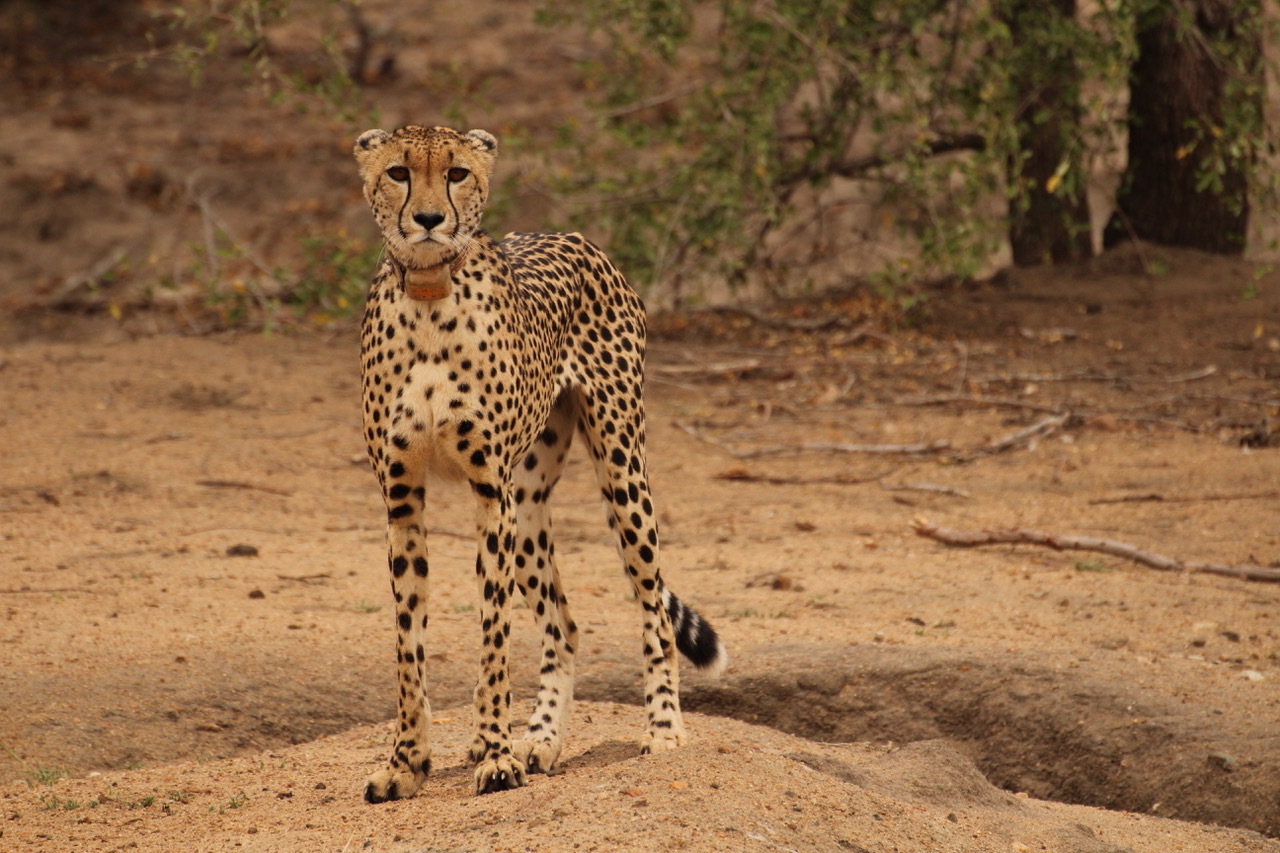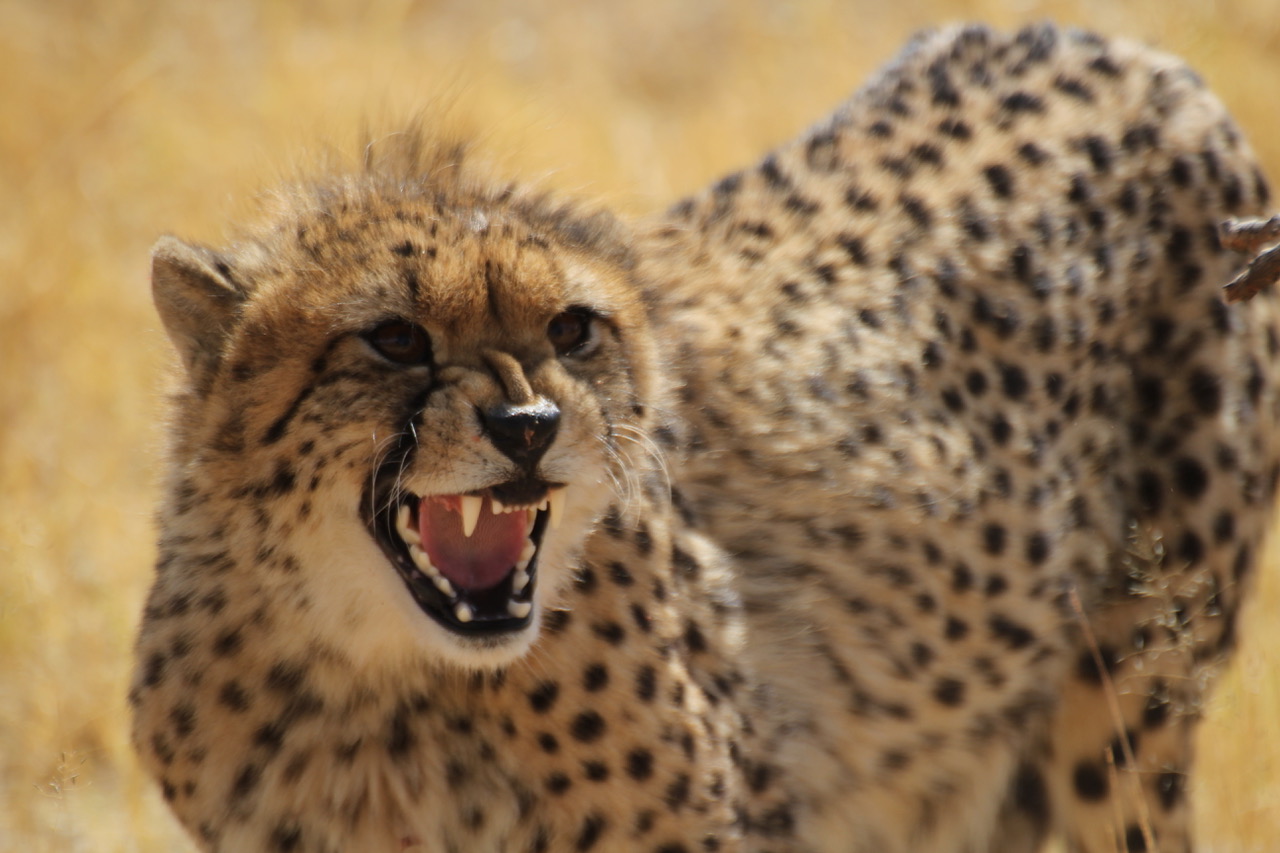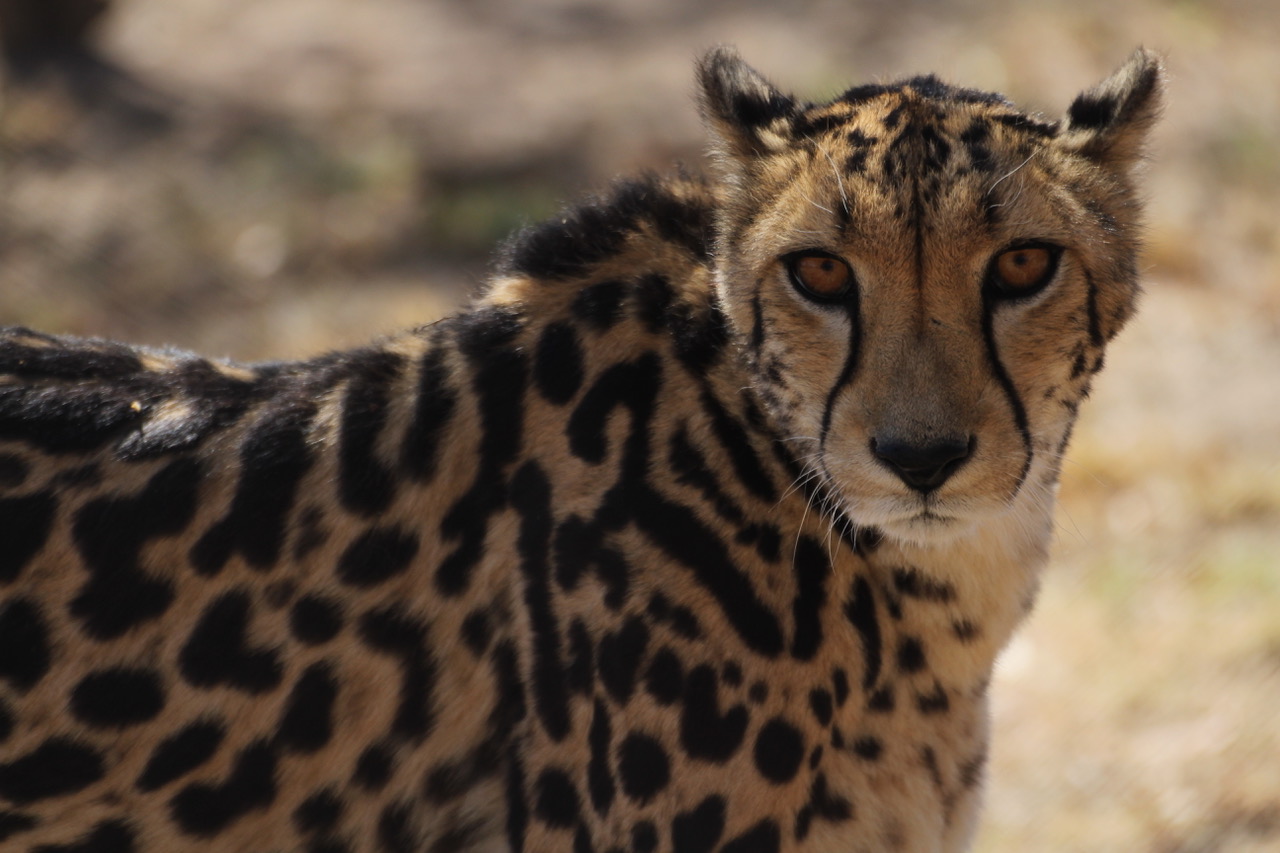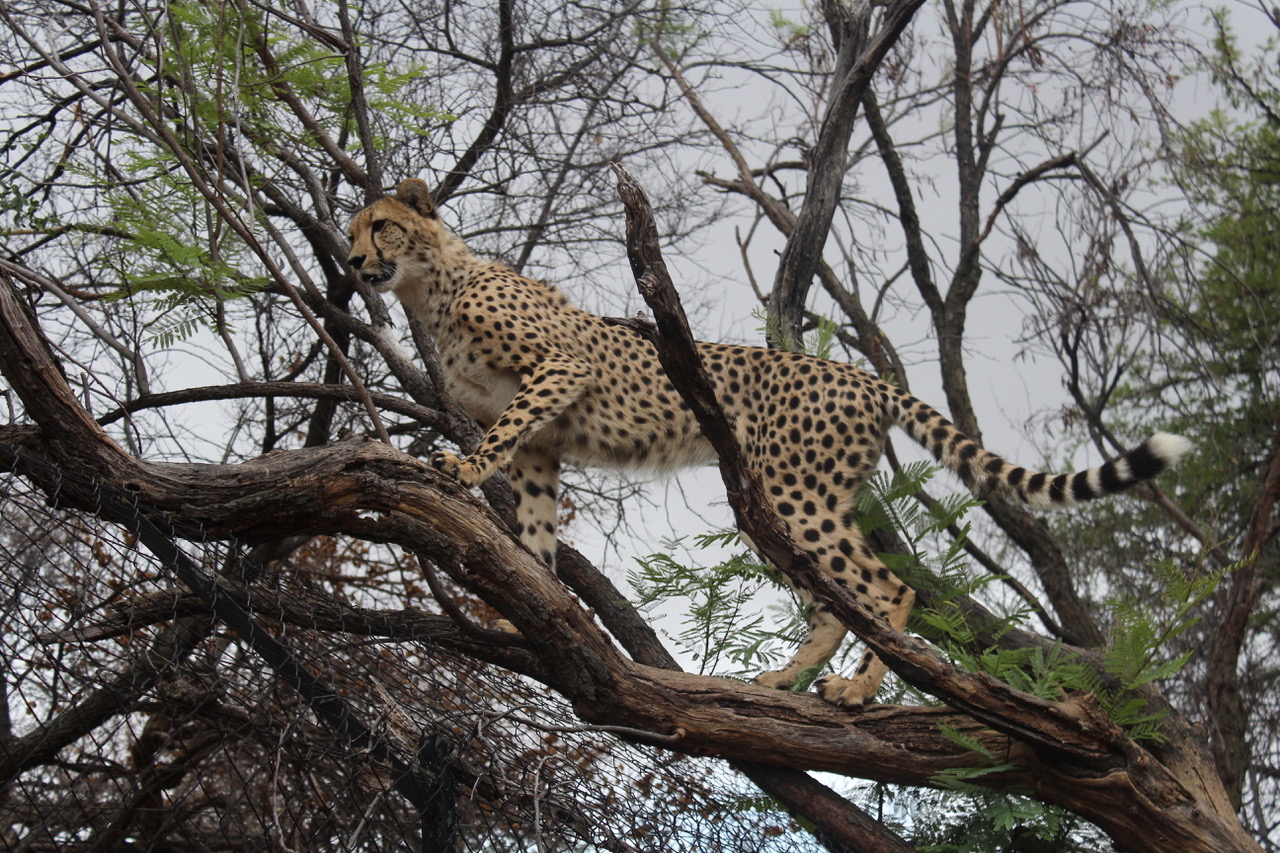Research project on cheetah vocal communication: The adaptive function of the cheetah’s contact chirp (FWF P 36610)
Principal Investigator: Angela Stoeger, PhD student Katharina Prager
We will research cheetah vocal communication focusing on the bird-like chirping calls with fundamental frequencies of up to 3000 Hz. These calls are unusually high for a mammal of the cheetah’s size, and confusingly resemble bird chirps in sound quality and structure. The chirp is used to maintain vocal contact and summon affiliated individuals, such as a mother and her cubs. There are two intriguing aspects about the chirp:
- it represents an upward outlier in respect to the acoustic allometric hypothesis (large animals produce lower-frequency sounds than small animals) and
- it is unusual for a species in an open habitat to use a high-pitched call as contact-call. According to the acoustic adaption hypotheses, low frequencies and longer call duration are better adapted for long-distance propagation.
High cub mortality due to competitor predation has had a significant impact on the cheetah’s evolution. The hypothesis that we intent to test is whether the high-pitched bird-like call represent a form of acoustic crypsis employed as a defense mechanism against eavesdropping competitors, and / or to avoid detection by prey.
An upcoming line of research is to identify outliers to acoustic principles and trace their evolutionary origin and adaptive function. So far, research on deviations from acoustic allometry principles has focused on size exaggeration (downward outliers) mainly caused by sexual selection. The cheetah exhibits size-reduction mechanisms. We may shed light on evolutionary pressures that have a significant impact on mammalian acoustic communication. Acoustic crypsis is an intriguing phenomenon and probably one of the least studied potential surviving mechanisms, particularly in mammals. It may open up new research on other species living in similar constrained conditions (mammals positioned as a predator and prey species) where such aspects have potentially been overlooked. We will start to fill a long-standing gap in mammalian bioacoustics providing an empirical foundation for a new theory on the adaptive function of call frequency in animal communication.




